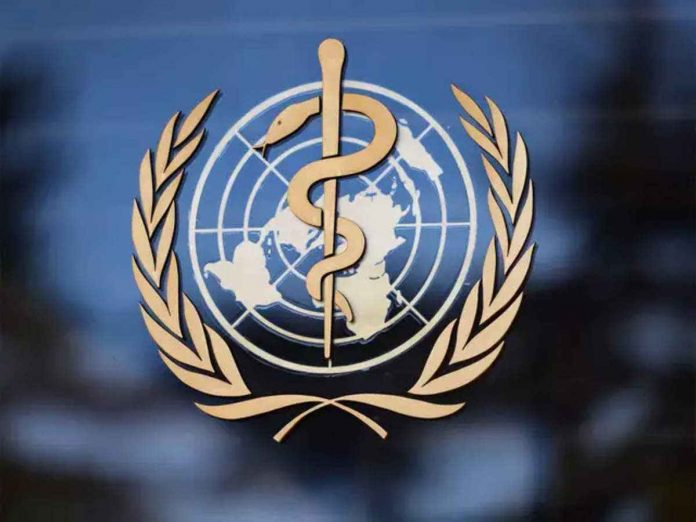UNITED NATIONS, One in every 100 deaths is by suicide, according to new figures from the World Health Organization (WHO), a Geneva-based UN agency.
More than 700,000 people died by suicide around the world in 2019, the figures show, more than the numbers killed by diseases like HIV, malaria or breast cancer, or even by war or murder.
Launching new guidance in a bid to help cut the suicide rate by a third by 2030, WHO Director-General Dr Tedros Adhanom Ghrebeyesus said that the deaths must not be ignored – particularly as many of the risk factors for suicide have only become more prevalent during the Covid-19 pandemic.
“We cannot – and must not – ignore suicide,” he said.
“Each one is a tragedy. Our attention to suicide prevention is even more important now, after many months living with the COVID-19 pandemic, with many of the risk factors for suicide, job loss, financial stress and social isolation – still very much present.”
In most parts of the world, suicide rates are already declining. Rates have fallen by 36 per cent since 2000. But in the Americas, rates have increased by 17 per cent over the last 20 years.
The figures are pre-pandemic, and its impact on suicide remains unclear, although recent research from Thailand showed a rise in 2020.
The WHO said more efforts were needed globally whatever the impact of Covid-19, because rates are not coming down fast enough even before the crisis.
Moreover, only 38 countries are known to have national suicide prevention strategies.
Progress also remains uneven across different genders and age-groups, the WHO said.
Suicide is the fourth leading cause of death for young people aged 15-29, after road injury, tuberculosis, and violence.
More than twice as many men as women die due to suicide –12.6 per 100,000 males compared with 5.4 per 100,000 females. Rates are higher for men in high income countries, whereas for women, rates are higher in lower-middle income countries.
The WHO said a key preventive strategy would be limiting access to means of suicide, for example by banning dangerous pesticides as well as restricting access to firearms and installing barriers at jump sites.
National bans of the toxic chemicals in pesticides were a particularly effective step, WHO said, because self-poisoning with pesticides is estimated to cause around 20 per cent of all suicides. It is one of the leading causes of suicide across Asia.
Other important strategies include working with adolescents to develop socio-emotional skills, because half of mental health conditions appear before 14 years of age.
Educating the media on the responsible reporting of suicide, and working with social media companies, as well as improving the identification and follow-up of anyone affected by suicidal thoughts, are also central, WHO said.
While rates varied between countries, regions and gender, the analysis shows that more than twice as many men kill themselves, than women.
Those rates are generally greater in high-income countries, while the highest suicide rates for women were found in lower middle-income countries.
Per 100,000 people, the 2019 global average of suicide rates stood at 9.0, while that number jumped to 11.2 in the WHO Africa region; 10.5 in Europe; and 10.2 in Southeast Asia. At 6.4, the Eastern Mediterranean region had the lowest rate.
“Each one is a tragedy”, said the WHO chief.
While the report showed a global suicide drop of 36 per cent between 2000 and 2019, the Americas Region witnessed a 17 per cent surge.
WHO said, “A significant acceleration” in suicide reduction is needed to meet the Sustainable Development Goal (SDG) target by 2030.
WHO’s guidance to suicide prevention, zeros in on four strategies: limiting access to the means of suicide; educating the media on responsible suicide reporting; fostering socio-emotional life skills in adolescents; and early identification, assessment, management and follow-up of those with suicidal thoughts and behaviour.
The guidance highlights that in the social media age, media reports can prompt copycat suicides, especially when surrounding a celebrity.
It calls for suicide coverage to be counteracted with articles highlighting successful recovery from mental health challenges or suicidal thoughts.
It also recommends working with social media companies to increase awareness and remove harmful content.
Since half of all mental health conditions appear before children reach 14, adolescence is a critical period, according to WHO, which encourages anti-bullying programmes, support services and clear protocols for people working in schools when suicide risk is identified.
A previous suicide attempt is one of the most important risk factors for a future suicide, said the UN health agency.
Healthcare workers should be trained in early identification, assessment, management and follow-up and crisis services should also be available to individuals in acute distress, according to the guidance.
“A comprehensive national suicide prevention strategy should be the ultimate goal for all Governments”, Alexandra Fleischmann, WHO suicide prevention expert said, adding that “LIVE LIFE interventions can save lives and prevent the heartbreak that follows for those left behind”.
Follow the PNI Facebook page for the latest news and updates.








